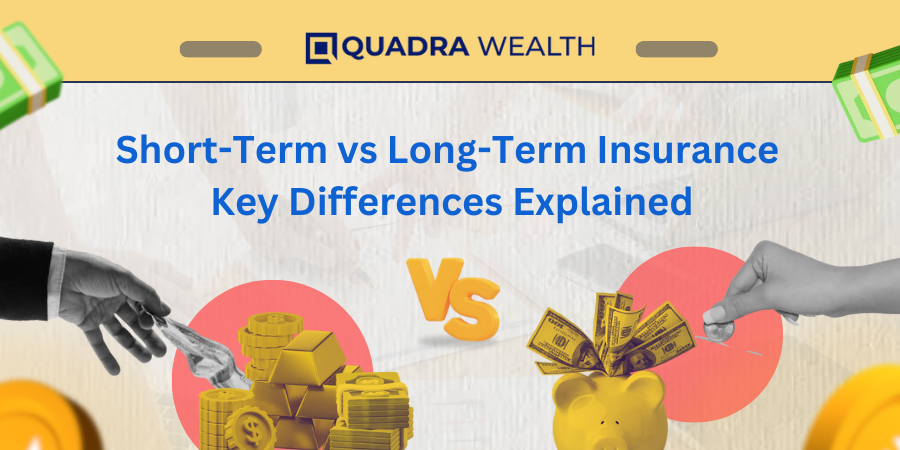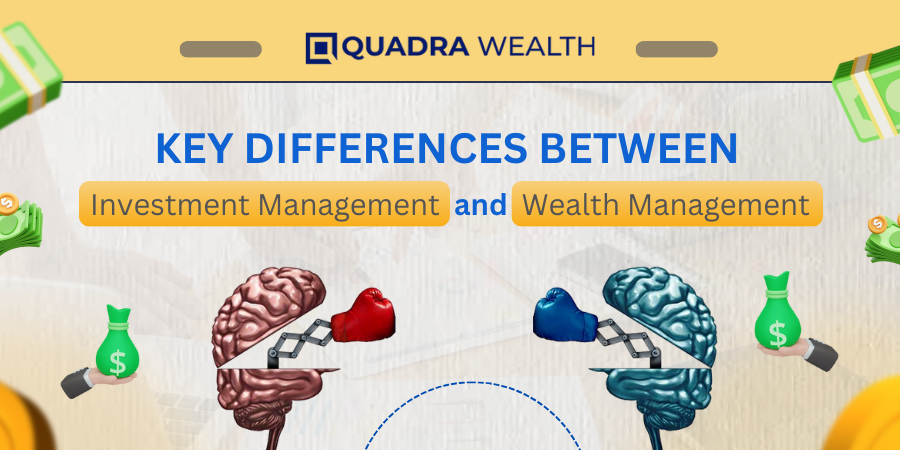Are you looking for innovative ways to diversify your investment portfolio? Structured notes, a hybrid financial product, might be the answer.
This blog will educate you on what structured notes are, their advantages and disadvantages, and how to integrate them into your investment strategy.
Keep reading to take your first step toward a potentially rewarding investment venture!
Key takeaways
●Structured notes are a hybrid financial product that combines traditional securities with a derivative component, offering the potential for higher returns compared to traditional investments.
●Investing in structured notes provides downside protections, with some offering a full or partial return of principal at maturity, but credit risks and potential missed payments should be considered.
●Structured notes offer customization options, allowing investors to choose their preferred level of risk and tailor their investments to match their specific goals. They also enable complex investment strategies by diversifying across other asset classes.
Understanding Structured Notes
Structured notes are a type of financial product that blends securities like traditional bonds with a derivative component. This hybrid security is crafted to match certain investment objectives, such as income growth or risk management.
A structured note is a debt security issued by financial institutions. Its return is based on equity indexes, single equity, a basket of equities, interest rates, commodities, or foreign currencies.
The performance of a structured note is linked to the return on an underlying asset, group of assets, or index.
The key feature of a structured product is that they do not house an actual portfolio of underlying assets like mutual funds or exchange-traded funds (ETFs). Instead, the payoffs rely on the performance of reference assets which can range from stocks and commodities to currencies and various other asset classes.
Notably, some structured notes come with principal protection offering either full or partial return of principal at maturity. PPNs for instance, guarantee a minimum return ensuring investors receive back their initial investment irrespective of market fluctuations.
Speaking in terms of its structure, each note consists mainly of two components – an unsecured bond component promising fixed interest rate payments and a derivative part providing market-linked exposure for potentially enhanced returns.
The diversity in features introduces complexities but creates opportunities for matching specific investor needs as well and has made them more accessible, easy to understand, cost-effective, and transparent for financial advisors and their clients.
Advantages of Investing in Structured Notes
Investing in structured notes offers downside protections, higher returns, customization, and the ability to enable complex structured investment strategies.

Higher Returns
Investing in structured notes presents an opportunity for significantly higher returns compared to traditional securities. The potential to yield amplified profits hinges on the performance of the reference asset or index tied to the note.
Significant gains from market-linked exposure and enhanced returns are key attractions of these hybrid financial products.
The structured note offers customizable participation rates, defining how much investors can benefit from an upward movement in linked assets. However, while aiming for high-return investment strategies, it’s also crucial to note that maximum returns on structured notes often come with a cap.
This limit defines the utmost payment that’s aligned with the performance of linked assets, restricting unlimited profits.
Despite this ceiling effect, many investors find higher returns offered by structured notes attractive in a low-return environment.
Downside Protection
Investors appreciate structured notes for the downside protection they offer. Investors can choose from notes that focus more on downside protection and income generation (known as income notes).
This financial safeguard ensures a full or partial return on your original investment, known as principal, at maturity.
The extent of this shield varies: some structured notes give you 100 percent principal protection while others provide only partial cover. Terms such as barriers and buffers are used to denote these levels of contingent or hard protection linked with structured notes.
However, it’s crucial to note that principal protection is subject to specific events taking place during the investment period. Moreover, another potential risk related specifically to protected notes includes call risk; in this case, the structured note issuer has the power to take back the note before its maturity date under certain conditions.
Customization
Investing in structured notes offers investors the opportunity for customization. This means that investors can tailor their investments to match their specific risk tolerance and investment objectives.
Some structured notes offer different levels of downside protection or participation rates, allowing investors to choose the level of risk they are comfortable with.
Additionally, investors can often select from an underlying asset or indices, such as a mutual fund, stocks, commodities, or currencies, based on their preferences and market outlook.
The ability to customize these investments provides flexibility and empowers investors to align their portfolios with their individual needs and goals.
Enabling Complex Investment Strategies
Structured notes have the unique capability of enabling complex investment strategies. With their combination of traditional security and a derivative component, structured note offers investors the opportunity to create sophisticated investment approaches tailored to their specific goals.
By incorporating different types of underlying assets, such as stocks, commodities, or currencies, structured notes allow for diversification across various asset classes.
This versatility provides investors with the ability to implement more intricate strategies that go beyond traditional buy-and-hold investments. Whether it’s enhancing returns through market exposure, capitalizing on fixed-income securities, or exploring other innovative investment ideas, structured notes open up new avenues for constructing intricate and customized portfolios.
Disadvantages of Investing in Structured Notes
Structured notes can come with certain disadvantages, including credit risks, potential missed payments, and high fees.

Credit Risks
Investing in structured notes comes with a certain level of credit risk. This means there is a possibility that the investment bank issuing the notes may default on its obligations.
In such cases, average investors could potentially lose their principal and other payments. Even PPNs are not immune to this credit risk if the issuer goes bankrupt.
It’s important to note that PPNs might have caps limiting gains, despite promising no downside risk.
Another credit risk factor to consider is the potential for the issuer to redeem before the note matures, which can affect an investor’s ability to reinvest at the same rate of return.
Potential Missed Payments
Investing involves the risk of potential missed payments. While these investment vehicles offer advantages like higher returns and downside protection, there is always a chance that issuers may not make their scheduled payments.
This means investors could miss out on expected income or principal repayment. It’s important to carefully evaluate the creditworthiness of the issuer before investing in structured notes to mitigate this risk.
High Fees
Structured notes often come with high fees, which can eat into your investment returns. On average, these products have embedded fees that can go as high as 2.9%. This estimated value is important to consider when evaluating the overall cost and potential profitability of investing in structured notes.
Types of Structured Notes and Examples
Many structured notes come in several types, each with distinct characteristics and components. Understanding the different types of structured notes can help you determine which ones align well with your investment goals.
Type of Structured Note | Description | Example |
Principal Protected Notes (PPNs) | These offer a full return on your principal investment at maturity, provided the issuer does not default. They are relatively less risky. | An investor puts $1000 into a PPN with a five-year term. At maturity, they are guaranteed to receive at least their initial $1000 back, with the potential for additional returns if the underlying asset performs well. |
Yield Enhancement Notes | These structured notes focus on generating higher yields compared to traditional fixed-income investments. They do not offer principal protection. | An investor places $5000 into a yield enhancement note linked to the S&P 500 index. If the index performs well, they enjoy enhanced returns. However, if the index declines, they may lose a portion or all of their initial investment. |
Buffer Notes | These offer partial protection from losses in exchange for potentially higher returns. There’s a ‘buffer’, a certain percentage of loss the issuer absorbs before you start losing money. | An investor buys a buffer note with a 10% buffer. If the linked asset falls by 15%, the investor only experiences a loss of 5% because the issuer absorbs the first 10%. |
Autocallable Notes | These have a mechanism that automatically calls, or redeems, the note on predetermined dates if the asset or index reaches a specific price. | An investor purchases an autoclavable note with annual call dates. If the underlying asset’s price is at or above its initial level on any of these call dates, the note is automatically redeemed with a return of principal plus a predetermined coupon. If the asset’s price never hits the call level, the note stays in place until maturity. |
Remember, regardless of the type of structured note, principal protection is conditional and relies on the financial strength of the issuer, so potential credit risks should be carefully evaluated.
How to Invest in Structured Notes
Investing in structured notes is a straightforward process. You can purchase and sell structured notes through various channels, such as online broker platforms or financial advisors.
A financial advisor could answer questions about the risks behind a structured note. Understanding how payouts and tax implications for structured notes are also crucial.
To learn more about investing in structured notes, continue reading.
Purchasing and Selling Structured Notes
Investing in structured notes involves the process of purchasing and selling this financial product. When purchasing a structured note, investors typically work with a financial advisor or use an online broker platform to find suitable options.
They can choose from various types of structured notes based on their investment objectives and tolerance of the risk levels. Once they have selected a specific structured note, they can place an order to purchase it through their chosen platform or financial institution.
On the other hand, when selling a structured note, investors may need to consider factors such as market conditions and any applicable fees or penalties for early redemption.
Selling can be done through the same platform or institution where the purchase was made, with the investor receiving either the principal amount invested or any accrued returns depending on the terms of the note.
Payouts and Taxes for Structured Notes
Investors need to be aware of the potential tax implications when investing in structured notes. Even if the note hasn’t reached maturity or generated any cash, investors may still be responsible for paying federal taxes on these investments.
Additionally, it’s important to note that structured notes often come with higher fees compared to other investment options. On average, embedded fees can be as high as 2.9%.
Therefore, investors should carefully consider the potential payouts and tax obligations associated with structured notes before making an investment decision.
Factors to Consider Before Investing in Structured Notes
Consider risk, complexity, and liquidity before investing in structured notes. Make informed decisions to maximize returns and minimize potential risks. Read on to learn more about these factors and how they can impact your investment strategy.
Market Risk
It is a crucial consideration when investing in structured notes. The performance of the reference asset or index determines the payment made to investors, and this can be influenced by market fluctuations.
It’s important to remember that maximum returns are capped, limiting the amount investors can earn from the performance of the reference asset or index.
Additionally, some structured notes have a knock-in feature that can lead to the loss of principal and coupon payments if a pre-specified level of the reference asset or index is breached.
Call provisions in structured notes also pose a risk as they allow issuers to redeem the growth notes before maturity, potentially impacting investors’ ability to reinvest at similar rates of return.
Complexity
Structured notes can be complex investment products due to their unique payoff structure. The returns on a structured note are tied to the performance of a reference asset or index, making them more intricate than traditional securities.
Additionally, structured notes combine derivative components with traditional security, further adding complexity.
Terms like barriers and buffers are often associated with structured notes that offer principal protection, providing contingent or hard protection based on certain events occurring.
However, it’s important to note that the level of principal protection is dependent on the financial strength of the issuer and there may also be limitations on potential returns.
As such, investors should carefully consider their understanding of these complexities before investing in structured notes.
Liquidity and Call Provisions
Investors considering structured notes should be aware of two important factors: liquidity and call provisions. Liquidity refers to how easily an investor can buy or sell a structured note in the market.
It’s important to note that structured notes may have limited liquidity compared to other investments like mutual funds or ETFs. This means that selling structured notes before maturity may result in a loss or difficulty finding a buyer.
In general, structured notes aren’t listed on an exchange, and there’s no principal guarantee of a secondary market for trading them. These characteristics are often associated with a potential lack of liquidity, so you could have your money tied up for the term of the note
Additionally, call provisions allow the issuer to redeem the structured note before its maturity date. Investors should evaluate the liquidity and call provisions of structured notes before investing, especially if they may need quick access to their funds.
Conclusion
In conclusion, investing in structured notes can offer investors the potential for higher returns, downside protection, customization options, and the ability to pursue complex investment strategies.
However, it’s important to carefully consider the credit risks, potential missed payments, and high fees associated with these investments.
Before investing in structured notes, individuals should thoroughly their financial planning and evaluate the risk in the market, complexity factors, and liquid market considerations. You can consult an investment adviser for a better understanding of structured notes.
Ultimately, structured notes can be a valuable addition to an investment portfolio if utilized correctly and aligned with individual financial goals and tolerance of the risk levels.
FAQs
Structured note-based investment products combine elements of both bonds and the derivative portion. They typically provide investors with a return based on the performance of an underlying asset, such as a stock or index, while also offering downside protection through various structures.
No, the structured note may not be suitable for all sophisticated investors. They often have complex features and risks that may not align with an individual’s investment goals or tolerance of the risk levels. It is important to thoroughly understand the product and consult with a financial advisor before investing in the structured note.
To evaluate potential returns and risks, it is important to carefully review the terms and conditions of the specific structured note being considered. Factors such as the underlying asset, coupon rate, maturity date, barrier level, and issuer creditworthiness should be accurately assess to determine potential returns and associated risks.
Some common types of structures used in the particular structured note include reverse convertibles, auto callables, range accruals, principal-protected notes (PPNs), and equity-linked securities (ELS). Each structure offers different risk free return profiles depending on market conditions and investor objectives.







